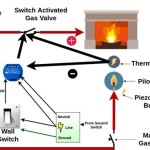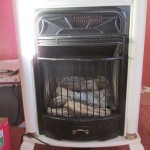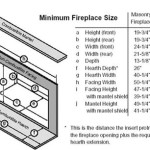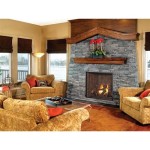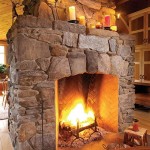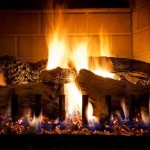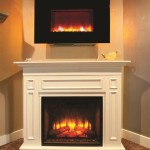Understanding High-Temperature Fireplace Caulk
Fireplaces provide warmth and ambiance to homes, especially during colder months. Maintaining a fireplace's integrity is crucial for safety and efficiency. A fundamental aspect of this maintenance involves using the correct type of caulk, specifically high-temperature fireplace caulk, to seal gaps and cracks. This article explores the properties, applications, benefits, and considerations associated with using high-temperature fireplace caulk to ensure a safe and effective fireplace operation.
Fireplace caulk, unlike standard caulk, is formulated to withstand the extremely high temperatures generated by a burning fire. These specialized sealants are designed to remain pliable and prevent cracking, crumbling, or melting when exposed to intense heat. Standard caulks, typically acrylic or silicone-based, are inadequate for fireplace applications, as they degrade rapidly under high temperatures, potentially releasing harmful fumes and compromising the fireplace's structure.
The primary function of high-temperature fireplace caulk is to create a tight, heat-resistant seal around fireplace components. These components include the firebox, chimney, and other areas exposed to direct heat or flue gases. The seal prevents the escape of smoke, carbon monoxide, and other harmful byproducts of combustion into the living space. A properly sealed fireplace also contributes to improved energy efficiency by preventing drafts and heat loss.
Key Properties of High-Temperature Fireplace Caulk
The effectiveness of high-temperature fireplace caulk stems from its unique chemical composition and physical properties. Understanding these properties is important for selecting the appropriate caulk for a specific fireplace application.
Heat Resistance: This is the most critical property. High-temperature fireplace caulk must withstand continuous exposure to temperatures that can exceed 1000°F (538°C) in some areas of the fireplace. The caulk's formulation ensures it does not melt, crack, or lose its adhesive properties under these conditions. The specific heat resistance rating of the caulk is typically indicated on the product packaging and should be carefully considered based on the fireplace's operating conditions.
Adhesion: High-temperature caulk must adhere strongly to the materials commonly used in fireplace construction, such as brick, stone, metal, and concrete. The caulk's adhesive properties ensure a long-lasting seal that resists separation caused by thermal expansion and contraction. Proper surface preparation, including cleaning and drying, is crucial for achieving optimal adhesion.
Flexibility: While heat resistance is paramount, the caulk must also possess a degree of flexibility to accommodate the expansion and contraction of fireplace materials as they heat up and cool down. This flexibility prevents the seal from cracking or breaking, maintaining its integrity over time. Caulk that is too rigid is prone to failure, leading to leaks and compromised safety.
Chemical Resistance: The caulk should be resistant to the chemical byproducts of combustion, including acidic flue gases and creosote. Exposure to these substances can degrade some caulks, weakening the seal and potentially releasing harmful fumes. A chemically resistant caulk ensures a longer service life and minimizes the risk of hazardous emissions.
Water Resistance: While the fireplace is primarily exposed to high temperatures, the caulk may also be subjected to moisture, especially in outdoor fireplaces or chimney applications. Water-resistant caulk prevents water penetration, which can damage the fireplace structure and compromise the seal's integrity. The caulk should repel water and resist degradation from freeze-thaw cycles.
Applications of High-Temperature Fireplace Caulk
High-temperature fireplace caulk serves multiple purposes in ensuring the safe and efficient operation of a fireplace. Identifying the specific application allows for the selection of the most appropriate type of caulk and application technique.
Sealing Firebox Cracks: Cracks in the firebox, the inner chamber of the fireplace, can allow smoke and carbon monoxide to escape into the living space. High-temperature caulk is used to seal these cracks, preventing the leakage of harmful combustion byproducts and improving the fireplace's efficiency. Inspecting the firebox regularly for cracks and promptly sealing them is an important aspect of fireplace maintenance.
Sealing Around Stove Pipes and Inserts: When installing a wood-burning stove or fireplace insert, a tight seal is essential around the pipe or insert to prevent smoke from leaking into the room. High-temperature caulk is used to create this seal, ensuring that all combustion gases are properly vented through the chimney. The caulk should be applied carefully to fill any gaps or seams around the pipe or insert.
Repairing Mortar Joints: Deteriorated mortar joints in brick or stone fireplaces can lead to air leaks and structural instability. High-temperature caulk can be used to repair these joints, providing a heat-resistant and durable seal. While caulk is not a replacement for proper mortar repair, it can serve as a temporary solution or for minor repairs.
Sealing Chimney Flue Liners: The flue liner, which is the inner lining of the chimney, is crucial for containing and directing combustion gases safely out of the house. Cracks or gaps in the flue liner can allow these gases to leak into the chimney structure, potentially causing damage or even a fire. High-temperature caulk can be used to seal these cracks and gaps, maintaining the integrity of the flue liner. However, significant damage to the flue liner may require professional repair or replacement.
Preventing Drafts: Air leaks around the fireplace can cause drafts, making the room uncomfortable and reducing the fireplace's efficiency. High-temperature caulk can be used to seal these leaks, preventing cold air from entering the room and warm air from escaping. Sealing drafts around the fireplace can significantly improve energy efficiency and comfort.
Considerations When Using High-Temperature Fireplace Caulk
While using high-temperature fireplace caulk is generally straightforward, several factors need consideration to ensure a successful and long-lasting application. Ignoring these considerations can lead to premature failure of the caulk and potential safety hazards.
Surface Preparation: Proper surface preparation is critical for achieving optimal adhesion. The surfaces to be caulked should be clean, dry, and free of loose debris, dirt, oil, or old caulk. Using a wire brush or scraper to remove any loose material is recommended. For oily or greasy surfaces, a solvent cleaner may be necessary. Allowing the surfaces to dry completely before applying the caulk is essential.
Caulk Selection: Choosing the correct type of high-temperature caulk for the specific application is crucial. Different caulks have different heat resistance ratings, adhesion properties, and chemical resistance. Refer to the product packaging and manufacturer's recommendations to ensure the caulk is suitable for the intended use. Consider the operating temperatures of the fireplace, the materials being sealed, and the potential exposure to chemicals or moisture.
Application Technique: Applying the caulk correctly is essential for creating a tight and durable seal. Use a caulk gun to apply the caulk evenly and smoothly. Avoid applying too much caulk, as this can lead to cracking and shrinking. Tool the caulk joint with a wet finger or a caulking tool to create a smooth and professional finish. This also helps to force the caulk into any small gaps or crevices.
Curing Time: Allow the caulk to cure completely before using the fireplace. The curing time varies depending on the type of caulk and the environmental conditions. Refer to the product packaging for specific curing time recommendations. Using the fireplace before the caulk is fully cured can compromise the seal and potentially release harmful fumes.
Safety Precautions: When working with high-temperature caulk, follow all safety precautions recommended by the manufacturer. Wear gloves and eye protection to prevent skin and eye irritation. Work in a well-ventilated area to avoid inhaling fumes. Dispose of used caulk tubes and rags properly. Keep caulk out of reach of children and pets.
Regular Inspection: Regularly inspect the caulk around the fireplace for any signs of cracking, crumbling, or separation. Promptly repair any damaged areas to maintain a tight and effective seal. Ignoring damage can lead to more significant problems and potential safety hazards. A well-maintained fireplace is a safe and efficient fireplace.
High-temperature fireplace caulk is an essential component for maintaining a safe and efficient fireplace. Its unique properties and applications contribute to preventing the escape of harmful combustion byproducts, improving energy efficiency, and extending the lifespan of the fireplace. By understanding the key properties, applications, and considerations associated with high-temperature fireplace caulk, homeowners can ensure the proper installation and maintenance of their fireplaces, providing warmth and ambiance safely and effectively.

Dap 10 1 Oz Black High Heat Mortar Sealant 12 Pack 7079818854 The Home Depot

Dap 10 1 Oz Black High Heat Mortar Sealant 12 Pack 7079818854 The Home Depot

Dap 10 1 Oz Black High Heat Mortar Sealant 12 Pack 7079818854 The Home Depot

Rutland 10 3 Fl Oz 500 F Rtv High Heat Silicone Black Cartridge

Rectorseal Hi Temp Red Silicone Caulk 57500 The Home Depot
Thurmalox 2655 High Temp Silicone Caulk Net4 Authorized Manufacturers Reer

Heat Resistant Silicone Sealant High Temperature Sealants Vitcas

Rutland 10 3 Fl Oz 600 F Rtv Silicone Sealant Red Cartridge 76r The Home Depot
Silicone High Temperature And General Purpose

Stove Bright M230 High Temperature Sealant Gasket Adhesive

